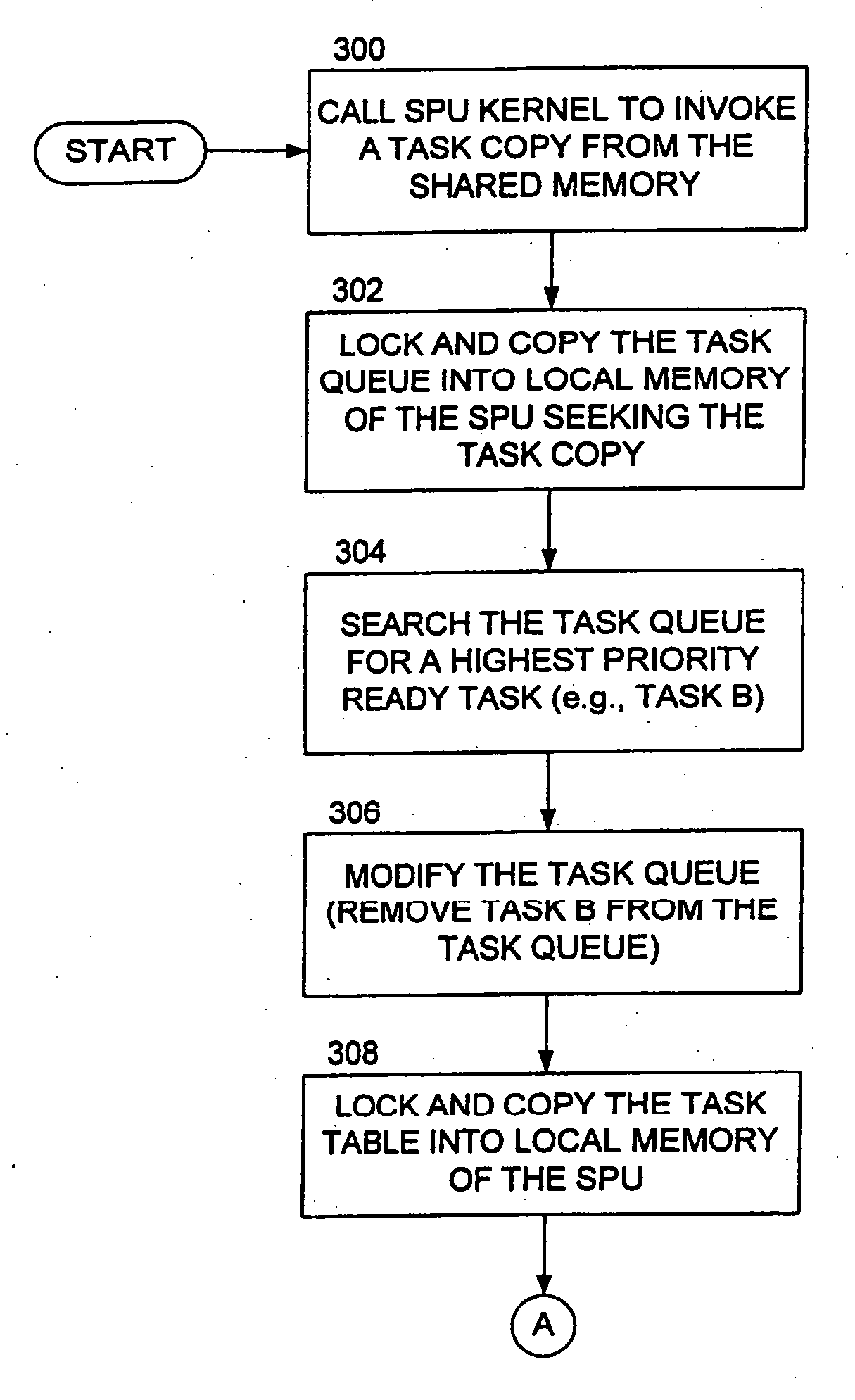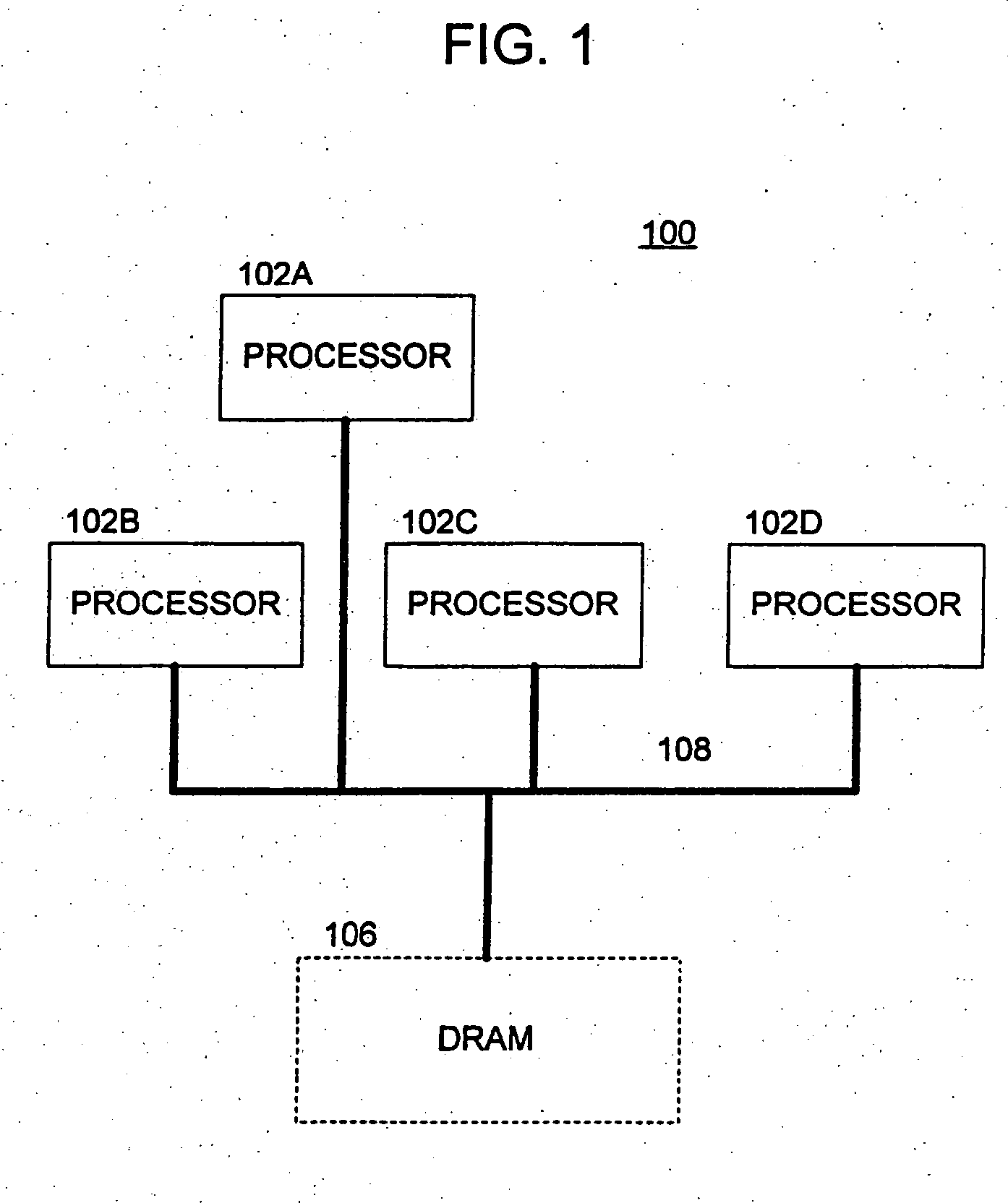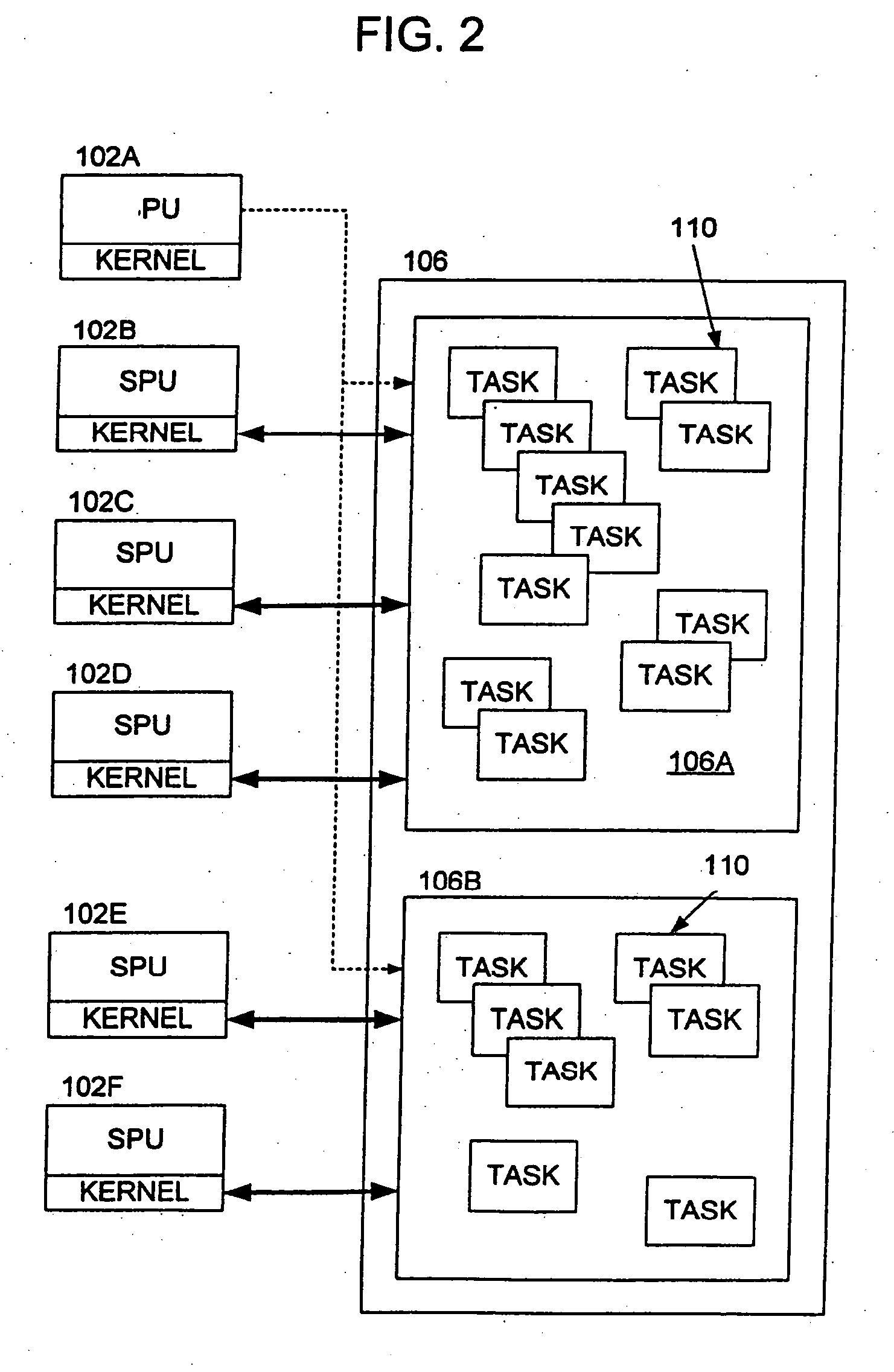Processor task migration over a network in a multi-processor system
a multi-processor system and task technology, applied in the direction of multi-programming arrangements, program control, instruments, etc., can solve the problems of limited scalability of multi-processor architectures, application requirements that require extremely fast processing speeds, and inability to generally match multi-processor architecture processing speeds
- Summary
- Abstract
- Description
- Claims
- Application Information
AI Technical Summary
Problems solved by technology
Method used
Image
Examples
Embodiment Construction
[0059] With reference to the drawings, where like numerals indicate like elements, there is shown in FIG. 1 a multi-processing system 100 in accordance with one or more aspects of the present invention. The multi-processing system 100 includes a plurality of processors 102 (any number may be used) coupled to a shared memory 106, such as a DRAM, over a bus 108. It is noted that the shared memory 106 need not be a DRAM; indeed, it may be formed using any known or hereinafter developed technology.
[0060] One of the processors 102 is preferably a main processing unit, for example, processing unit 102A. The other processing units 102 are preferably sub-processing units (SPUs), such as processing units 102B, 102C, 102D, etc. The sub-processing units 102 may be implemented using any of the known or hereinafter developed computer architectures. All of the sub-processing units 102 need not be implemented using the same architecture; indeed they may be of heterogeneous or homogenous configura...
PUM
 Login to View More
Login to View More Abstract
Description
Claims
Application Information
 Login to View More
Login to View More - R&D
- Intellectual Property
- Life Sciences
- Materials
- Tech Scout
- Unparalleled Data Quality
- Higher Quality Content
- 60% Fewer Hallucinations
Browse by: Latest US Patents, China's latest patents, Technical Efficacy Thesaurus, Application Domain, Technology Topic, Popular Technical Reports.
© 2025 PatSnap. All rights reserved.Legal|Privacy policy|Modern Slavery Act Transparency Statement|Sitemap|About US| Contact US: help@patsnap.com



